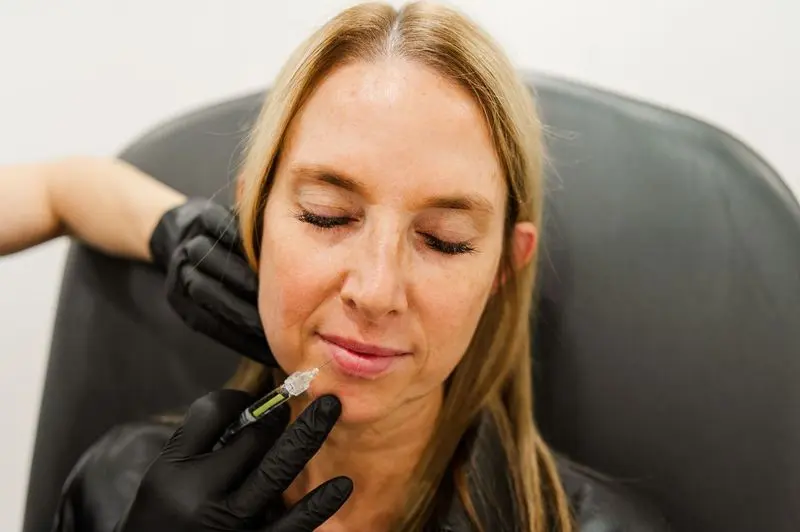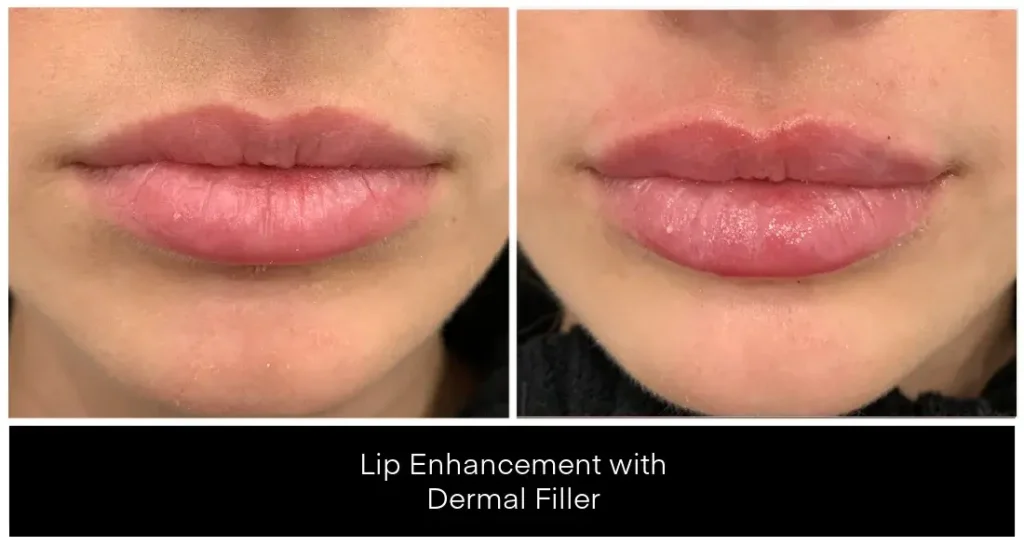
Lip fillers have become incredibly popular, offering a quick and effective way to enhance your lips’ volume and shape.
But one question often comes up: How much does lip filler cost?
Generally speaking, lip filler treatments in Canada typically cost between $500 to $2,000 per session. The exact price depends on factors like the type of filler, the amount needed, and the provider’s expertise. Always consult with a qualified professional to get an accurate estimate.
Let’s dive deeper into this topic with Yazdani Aesthetics and see if lip fillers are worth it, and the factors that might affect the cost.
What Are Lip Fillers?
Lip fillers are injectable treatments that add volume, shape, and symmetry to your lips. The most common type of lip filler is made from hyaluronic acid, a substance naturally found in your body. Popular brands like Revanesse, Juvederm and Restylane use this ingredient to give you plumper, more defined lips. These treatments offer a variety of benefits, from enhancing lip volume to smoothing out fine lines around your mouth.

Factors Influencing the Cost of Lip Filler Injections
The cost of lip fillers can vary widely based on several factors. Understanding these can help you plan your budget and choose the right option for you.
1. Type of Filler Used
Different brands and types of dermal fillers come with different price tags. For example, Revanesse, Juvederm and Restylane are three popular brands, but their costs may vary.
2. Geographical Location
Where you get your treatment can significantly impact the price. Clinics in larger cities like Toronto or Vancouver might charge more compared to those in smaller towns.
3. Provider’s Expertise
The experience and reputation of your injector play a big role. Highly experienced professionals tend to charge more, but their expertise can also mean better results.
4. Clinic or Facility
High-end clinics with luxurious settings may charge more than smaller, more modest practices. You’re paying not just for the treatment, but also for the environment and service quality.
5. Amount of Filler Needed
The more filler you need, the higher the cost. Some people may require more products to achieve their desired look, which will affect the total price.
6. Additional Costs
Don’t forget about potential additional costs like consultation fees, follow-up appointments, and touch-ups. These can add to your overall expenditure.
Is It Worth the Cost?

When considering the cost of lip fillers, it’s important to weigh the benefits.
- Benefits vs. Cost: Lip fillers can significantly enhance your appearance, boosting your confidence. The immediate and noticeable improvement can be worth every penny for many people.
- Longevity of Results: Typically, lip fillers last between 6 to 12 months. This means you might only need treatments a few times a year, making the cost more manageable over time.
- Comparisons to Other Cosmetic Treatments: Compared to other cosmetic treatments, lip fillers are relatively affordable and less invasive. For example, surgical lip augmentation is much more expensive and comes with a longer recovery time.
How to Choose the Right Provider
Choosing the right provider is crucial to ensure you get the best results and value for your money.
- Research and Recommendations: Do your homework. Look for providers with good reviews and ask for recommendations from friends or family who have had similar treatments.
- Consultation Process: During your consultation, discuss the procedure, and your goals and ask about the injector’s experience. This meeting is a good opportunity to gauge their expertise and ensure you feel comfortable with them.
- Red Flags to Watch Out For: Be wary of injectors who offer very low prices or seem too eager to proceed without a thorough consultation. Quality and safety should be your top priorities.
Conclusion
Lip fillers can be a fantastic lip enhancement method, but it’s important to understand the costs involved in this non-surgical procedure. From the type of dermal fillers to the expertise of your provider, many factors can influence the price. By doing your research and choosing a qualified professional, you can achieve beautiful, natural-looking results that are well worth the investment.
FAQ Section
What is the lip filler injection procedure like?
The lip injection procedure typically involves applying a topical anesthetic to numb the area. A thin needle is then used to inject the filler into the lips. The entire procedure usually takes about 30 minutes.
Do I need more than one syringe for my lip fillers?
Most patients may require more than one syringe to achieve their desired results, especially if they have very thin lips or have lost volume over time. However, some might achieve their desired result with only one syringe.
What are the most common side effects of lip injections?
The most common side effects include swelling, bruising, and tenderness at the injection sites. These typically subside within a few days.
How long do lip fillers last?
A dermal filler usually lasts between 6 to 12 months, depending on the type of filler used and individual factors like metabolism and lifestyle.
Can I get lip fillers if I have cold sores?
If you have an active cold sore, you should wait until it has completely healed before getting lip injections. If you are prone to cold sores, inform your provider, as they may recommend taking preventive medication.
Are lip injections suitable for asymmetrical lips?
Yes, lip injections can help correct asymmetrical lips by adding volume where needed to create a more balanced appearance.
What should I avoid after getting lip fillers?
After lip injections, avoid alcohol, intense exercise, and blood thinners for at least 24-48 hours to reduce the risk of swelling and bruising.
What should I do to reduce swelling after lip fillers?
Applying ice packs to the treated area can help reduce swelling. Also, drink plenty of water and avoid salty foods that can cause additional swelling.